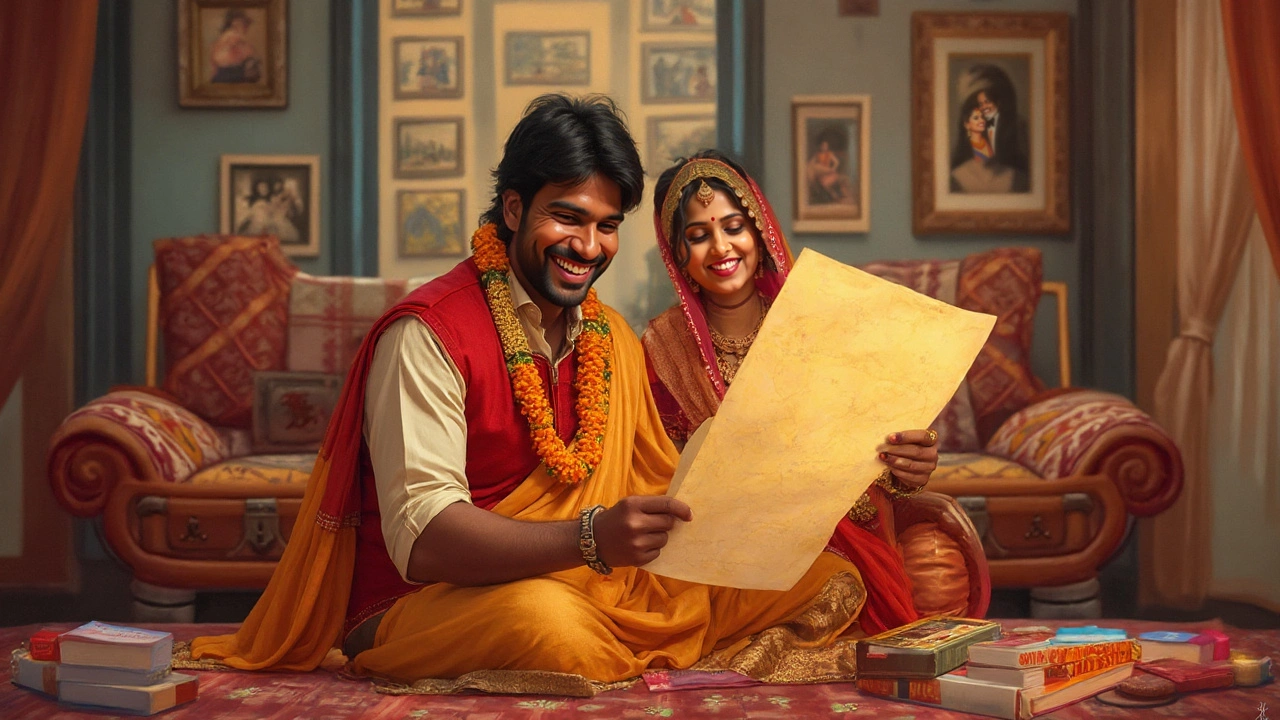Is a week enough to soak in that just-married dream, or do you crave a month lost on a sun-washed island? If you think honeymoons don’t have rules, you’re mostly right. But start telling people you’re off for three weeks and watch the reactions. Suddenly, you’re planning what’s considered a “long” honeymoon—and folks will have opinions. So, how long does a honeymoon have to be before it turns into something epic or, at least, worth a few raised eyebrows? The answer’s less obvious than you’d think, but it sure is interesting.
How Honeymoon Durations Add Up Around the World
Traditionally, the classic honeymoon lasted about a week. Lots of newlyweds booked a quick tropical escape for 5-7 days and called it bliss. But those rules have blurred. In a 2023 Expedia survey, most couples booked honeymoons ranging from five to 12 days. So where’s the threshold for a "long honeymoon"?
Here’s where it gets surprising: travel insiders and wedding planners often call any honeymoon over two weeks “long.” That’s not universal—European couples, for instance, often lean into longer holiday time and sometimes stay up to three weeks. Americans, with their stingy vacation allowances, average about a week to ten days. Aussies, on the other hand, are famous for taking longer breaks, sometimes clocking in a full month, especially if heading out of the country.
For perspective, check out this data from several wedding and travel industry sources, comparing average honeymoon lengths by country:
| Country | Average Honeymoon Length (Days) | Typical 'Long Honeymoon' Starts At (Days) |
|---|---|---|
| United States | 7-10 | 14 |
| UK | 10-14 | 21 |
| Australia | 14-21 | 24 |
| India | 10-14 | 21 |
| Japan | 7 | 14 |
The sweet spot for going from regular to "long" is somewhere between two and three weeks, depending on where you’re from.
A long honeymoon lets you stretch further—literally and emotionally. You can ease into your new reality, travel slow, settle in at each stop, or even blend work and leisure (yep, some couples work part-time while roaming Bali or southern Italy). Just keep your expectations in check; the thrill of getting to know each other in a new place can fade. Still, you’ll return home with more stories, inside jokes, and wild memories than a rushed week could ever give.
Why Some Couples Choose a Long Honeymoon
Let’s be honest, booking nearly a month off isn’t a casual move. So what makes people crave such a long post-wedding break? First, plenty of couples see it as the trip of a lifetime—a once-in-a-marriage opportunity. After months (or sometimes years) planning a wedding, the idea of jumping straight back into real life feels rough. A long honeymoon offers space to unwind, process, and genuinely bond without the pressure of schedules.
Another big reason is travel. With more couples choosing far-flung destinations like Patagonia, Southeast Asia, the Greek Islands, or New Zealand, the time and money spent getting there make a quick visit almost wasteful. Jet lag, layovers, and travel days chew up your schedule. Why not linger and make every hour count?
Some pairs even turn their honeymoons into "mini gap years"—think backpacking across South America, slow-roading around Europe by train, or island-hopping in the Caribbean. The rise of remote work means it’s easier to extend a trip, tag on a workcation, or hop to a new country every week. A Kiwi couple (true story) spent six weeks road-tripping from Portland to San Diego in a painted VW van, living off takeout tacos and digital freelance gigs. Their only regret? Not staying longer.
Let’s not forget cost-effectiveness. Longer stays sometimes unlock discounts on accommodation, flights, and tours. Weekly or monthly rates for Airbnbs can be surprisingly affordable in some locations. Lots of beach resorts and boutique hotels throw in perks for guests booking two weeks or more—think room upgrades, free spa treatments, or adventure excursions.
One more angle: culture. In some families, especially in South Asia and parts of Europe, it’s pretty common for honeymoons to bleed into a month or more. It becomes a rite of passage—a rolling adventure of temple visits, food tours, relatives’ houses, and lazy beach time. There’s no tick-the-box, Instagram-perfect trip. It’s about soaking in the newness together.

The Real Pros and Cons of Taking a Long Honeymoon
So, is a three-week escape in paradise all dreamy sunsets and breakfast buffets? Not always. There are some solid upsides and a few realities you need to keep in mind.
- Long honeymoon joy: You get more quality time, and the pressure to pack every day works its way out of your system. You become more of a traveler than a tourist.
- Deeper connections: Honestly, the magic starts when you hit that second week and aren’t rushing. You learn about each other’s quirks, rhythm, and bathroom habits—real talk.
- Richer experiences: You do more than hop from sight to sight. Maybe you take a cooking class, learn how to surf, or discover a hidden café you’d never find on a quick trip.
- Pace yourself: No more "we have to see it all!" urgency. There’s time for lazy mornings, afternoon naps, and spontaneous detours.
The other side of the coin?
- Cost can spiral. Even with discounts, three weeks in French Polynesia or Japan adds up. Saving for a year or more isn’t unusual.
- Work constraints catch up. Most jobs aren’t thrilled to hand out a month of leave, so couples either quit, combine honeymoon with a career break, or ask for an unpaid extension.
- Homesickness might hit hard, especially after the initial excitement settles.
- Spending 24/7 together is a blessing—and a test. If you’ve never traveled together before, throw in some solo time now and then.
- Logistics multiply. Visas, vaccinations, and travel insurance—these all matter when you’re on the road for so long.
One last thing: if you’re going big, make it intentional. It doesn’t have to be the most expensive trip of your life, but give it the detail and heart you want it to reflect. Extended honeymoons are rare. Most people go back to reality sooner than they like, so make the most of your time out there.
Tips for Planning a Long Honeymoon While Keeping Your Sanity (and Budget!)
If you’re getting the itch for a good, long escape after "I do", there’s no shortage of inspiration. Start by making wish-lists (separately is smart—compare after). Talk early about your must-haves: beaches, food, adventure, absolute deal-breakers. Stress-test your travel compatibility with a shorter trip before the honeymoon, if possible.
Budgeting is where the rubber meets the road. Start a dedicated account a year (or more) before you go. Cash gifts from the wedding can go directly to hotels or flights. Price it out across seasons—shoulder season (between high and low season) often means fewer crowds and lower rates.
Think about blending locations. Lots of couples now combine city time with nature, or split the trip into two or three very different spots to keep things fresh. For example, spend a week temple-hopping in Kyoto, then collapse on the beaches of Okinawa, and round it off with city life in Tokyo.
Book parts of your trip ahead—especially big flights or bucket-list hotels. Leave other days open to serendipity. That’s when special moments sneak up. Use local trains or buses where possible; they’re usually cheaper and far more interesting than a quick flight.
If you’ll be gone more than two weeks, check your travel insurance and know what it covers. Look for properties with laundry so you’re not living out of a suitcase or buying new clothes everywhere (unless that’s your thing).
Don’t overschedule yourselves. Give each other space, too. Even the happiest couples need solo walks on the beach or time to scroll Instagram without guilt.
Planning a long honeymoon isn’t about the perfect itinerary. It’s about time. Time to recover, connect, and wander a bit. Time to talk not just about wedding thank-yous, but what comes next: dreams, careers, maybe even how you’ll handle the first fight in a tiny Paris apartment. Take it from a few seasoned travelers—those offbeat detours and quiet afternoons are always what you remember most.
